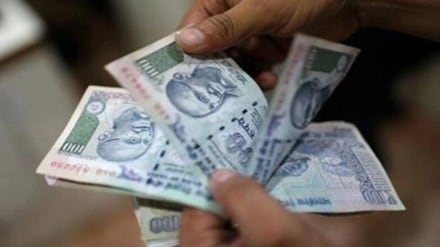The production-linked incentive (PLI) schemes, unveiled by the government since 2020 to boost domestic manufacturing in assorted areas, have resulted in additional (above-trend) investments of Rs 62,500 crore, the government said on Tuesday. These investments facilitated incremental production of Rs 6.75 trillion and exports of Rs 2.6 trillion till 2022-23, it added.
Incentives worth Rs 2,900 crore have been disbursed so far under eight of the 14 schemes rolled out so far, against claims of Rs 3,400 crore. The release of the funds is expected to pick up pace in all sectors soon, as the beneficiaries reach the milestones of incremental production.
Unveiling the data, Rajesh Kumar Singh, secretary, department for promotion of industry and internal trade (DPIIT), said the government is considering bringing sectors like toys, parts of new age bicycles and leather and footwear under PLI, but added that no additional funds would be needed for these inclusions. “They (more PLI schemes) all are at different stages of consideration,” he said.
Rajiv Thakur, additional secretary, DPIIT, said the incremental production facilitated by PLI schemes announced thus far will bring in an additional tax revenue of `5 trillion during the period the schemes will run while costing the government Rs 1.97 trillion.
Stating that PLI would result in a net revenue gain for the government, Thakur said that the telecom equipment sector that has been allocated Rs 12,195 crore, for instace, will generate Rs 7,500 crore as direct taxes and Rs 28,200 as indirect taxes additionally.
“(PLI-enabled) projects are on the ground, and investments and employment are happening. (More) disbursement will follow…But yes, there is a lag,” Thakur said.
Launched in 2020, PLI schemes started with an incentive package for large scale electronics manufacturing, bulk drugs, pharmaceuticals and medical devices. More sectors have since been added, with the latest being PLI 2.0 for computer hardware last month. The benefit is generally available for incremental production over the five years from the start of each scheme, with the latest one expected to run through 2028-29.
Till March, the government has approved 733 applications for PLI.
Former Reserve Bank of India governor Raghuram Rajan had recently questioned the effectiveness of the PLI schemes. Pointing to the mobile phone manufacturing, he had said incentives were only being given on finishing the product and not on the amount of value addition.
Without referring to Rajan, Singh said that domestic value addition in mobile phones has touched 20% from nil in 2014-15. Value addition percentage is 49% in China and 18% in Vietnam for phones, and India has reached 20% in very little time. “If we get closer to 50%, we will be happy,” he said.
Despite slow filing of claims for incentives, the secretary said that the entire corpus of the scheme is expected to be utilised as production picks up once the process of adding new capacities gets over.
The eight sectors where PLI performance is strong include large scale electronics manufacturing, pharma, food processing, telecom, white goods, auto and auto components.
Sectors that are yet to pick up include high-efficiency solar PV modules, advance chemistry cell (ACC) battery, textile products and specialty steel.
A review meeting of the scheme has been called on June 27 where representatives of all the ministries involved in its implementation and investors will participate.
“The concerned ministries have to see if PLI disbursement is low or if firms are not able to meet their performance thresholds, in such cases sometime relaxations may be required like the way it has been done for the IT sector,” the DPIIT secretary said. Last month, the government announced the PLI 2.0 for IT Hardware with a budgetary outlay of Rs 17,000 crore.
